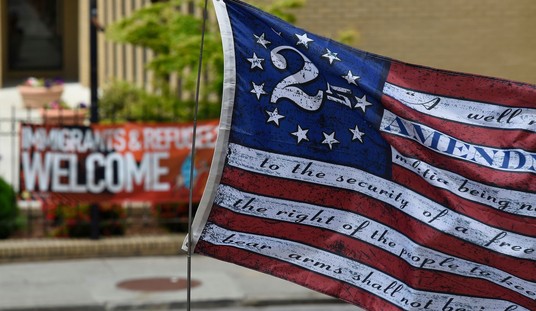
After a self-defense shooting where the aggressor dies, we often hear the same questions asked time and again.
“He didn’t have a weapon. Why was he shot in the chest/head?”
“He only had a bat/knife/fist. Why wasn’t he shot in the shoulder/arm?”
“Why didn’t they just shooting him in the arm/leg?”
When specifically discussing a shooting involving a uniformed law enforcement officer with his duty belt full of tools, we often hear, “Why didn’t they use pepper spray/nightstick/taser instead of a gun?”
One person in a unique position to answer that question is Michael Yon.
Yon is a former Green Beret who left the service after killing a much larger man in a bar fight in self-defense with a single punch.
He then worked private security, including Michael Jackson’s personal security detail.
He is best known, however, as a combat journalist.
Yon rose to prominence during the hottest parts of the Iraq war nearly a decade ago, when he embedded with American and British combat units who experienced heavy fighting. During one battle particular battle in Mosul, Iraq, Yon witnessed an American officer and an insurgent both take multiple serious hits and keep fighting as Yon kept snapping photos.
The ensuing article, Gates of Fire, is one of Yon’s most widely read articles (and is well worth a read).
Yon went on to spend more time embedded in combat units in Iraq and Afghanistan than any other journalist in either war. He’s seen a lot of fighting.
Here are his thoughts on “shooting to wound.”
Ferguson: Why did the officer not shoot Brown in the legs?
Many people are innocently asking this question. The answer could go on for pages, but to be succinct, a couple handfuls of reasons:
1) This ain’t the movies
2) Most police do not fire their weapons much. Most are not great shots.
3) He would have to be an incredible shot to be crazy enough to fire wounding shots.
4) Nearly all firefights are “stress shoots.” The other guy is moving. Heart is beating fast, often out of breath. The officer in Ferguson had just been punched in the face and had been in a wrestling match for his pistol, according to him.
5) Bullets that miss can hit someone else.
6) You always are low on ammo, and you do not want to waste a single bullet.
7) Time spent reloading is dangerous
8) I have seen many people shot who kept fighting. Shot with weapons far more powerful than any officer’s pistol. Many police and combat troops have seen this and will verify.
9) Police and Soldiers never train to shoot to wound. (None that I know of.) All combat shots are center mass of any part of the target that you can see. If you see only a foot. Shoot the foot. If you see a chest — aim for the middle. That is the way troops and police train. If the officer is pointing his pistol at someone, he is one click away from going lethal. There is no in between.
10) This ain’t the movies.During the firefight at the link below, I was photographing when two people were shot a total of seven times. Two men, shot seven times. (US Soldier three times, al Qaeda four times with M4 point blank.)
After the US Soldier was hit three times in front of me, he continued to fight well. He was hit badly at nearly point blank. The al Qaeda terrorist was hit 4x times. He was still standing trying to shoot. One shot took off a testicle, and then he got tackled by a US Soldier, and despite being hit 4x, he then engaged in aggressive hand to hand combat.
Again, this ain’t the movies…
Police officers and self-defense shooters all learn the same thing: you shoot to stop the threat. The best way to stop that threat is to put bullets in the largest possible part of the body (typically, the upper torso). If that fails to stop the threat, you then rely on your “failure drill” training and move to the head, and if that fails, the pelvis. You “work the problem” by moving your shots from the torso to the head and pelvis.
Killing isn’t a goal, but it is often a side effect of an aggressor who refuses to comply with lawful commands and who continues to demand ballistic attention.
If you don’t want to be shot, you shouldn’t attack other human beings, especially those who are armed.
They will shoot to stop the threat.








Join the conversation as a VIP Member